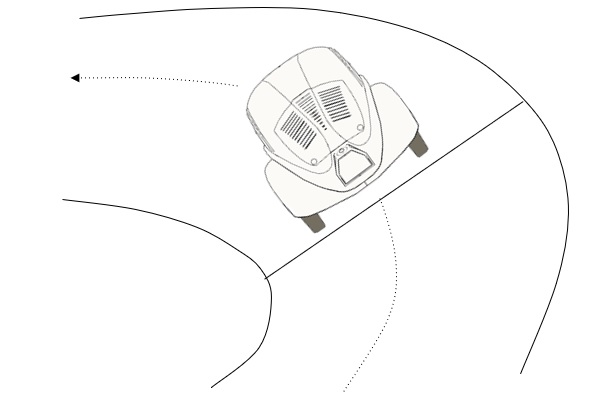The only force acting on this car in the horizontal is the force of friction
Hence the frictional force towards the center of the circular path should be equal to , where m is the mass of the car , v is the velocity of the car and r is the radius of the circular path.
-a mass on a string

The circular motion is in a vertical plane.
At every point in the uniform circular motion , the centripetal force acting on the mass must be equal to ![]()
The tension in the string at :
- point A is T1
- point B is T2
- point C is T3
At the top point A, the net force is T1+mg. Which implies ![]()
At point be B, the downward force is mg, and the inward force towards the center is T2. Hence ![]()
At point C, the net force acting is T3 – mg. Hence ![]()
-objects on banked tracks

A free body diagram of the car would be as follows:

without friction, the only inward force here is Nx, a component of the Normal force on the car from the road.
![]()
Now we know ![]() [since there is no motion in the y axis]
[since there is no motion in the y axis]
centripetal force: ![]()
now ![]()
So ![]()
which means

to achieve speed v, without friction, the roads need to be banked at an angle ![]()
Extract from Physics Stage 6 Syllabus © 2017 NSW Education Standards Authority (NESA)

